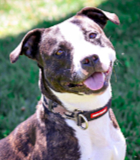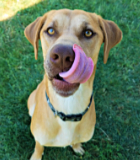Behavior/I have NO time
- This topic has 0 replies, 1 voice, and was last updated 16 years, 1 month ago by
Mackenzie’s Admin.
-
AuthorPosts
-
April 27, 2009 at 6:54 pm #404
Mackenzie’s Admin
MemberIF YOUR SITUATION INVOLVES BEHAVIOR
We would recommend that you first have your dog checked by your veterinarian to ensure there is no medical reason for the dog’s behavior. We would also encourage you to spay/neuter your dog(s) if you have not already done so, which can prevent or minimize behavior problems.You could learn more about canine behavior at various websites that has canine behavior articles available, such as:
http://www.aspca.org/site/PageServer
http://hsus.org/
http://www.bestfriends.org/theanimals/petcare/You might also want to contact a professional trainer/behaviorist to see if the problem can be resolved.
The following sites might be helpful.http://www.apdt.com (search for trainers near you)
http://www.k-9service.com
http://www.diamonddogstraining.com
http://www.pawsresultsmi.com
http://www.barkbusters.com
http://www.pawsitivecaninetraining.comNO TIME FOR DOG
Many people are gone for work each day. You might want to first ensure your dog has adequate mental and physical stimulation on a daily basis to prevent boredom (see article below). Perhaps you will find that you are able to keep him. If not, the suggested activities will hopefully be beneficial while you search for a good home for him.Physical & Mental Stimulation http://www.aspca.org.
Dogs need to be stimulated, both mentally and physically. Most breeds of dogs were developed to perform specific jobs for people, such as guarding, herding and hunting—work that demands great physical stamina and intense mental concentration. Without a “job” to do every day, our companion canines can become bored—at the very least. In general, a stimulated dog is a better-behaved dog. If the dog is physically spent, he is much less likely to engage in a variety of problem behaviors.PHYSICAL EXERCISE:
Most dogs benefit from a minimum of two outings a day. If the dog is trained to come when called, it’s ideal if you can exercise him off-leash in a safe area. The first outing of the day should be 45-60 minutes, early in the morning, especially if the dog is going to be left alone all day. The second outing can be shorter, around 30-45 minutes. Strenuous aerobic exercise is best, such as off-leash running/play with other dogs, running alongside a bicycle, swimming, playing fetch games, accompanying a jogger, or running on a treadmill. (Yes, there are treadmills specifically made for dogs, but canines can also be trained to run on human treadmills.)
If your dog is a habitual couch potato, check with your veterinarian before staring an exercise program. You’ll need to build your dog up gradually, the same as you would with a person unaccustomed to exercise. Puppies who are still growing should never be made to do any exercise or activity in which they are forced to keep moving. Playing with other puppies or people is the best exercise for a puppy. If your dog has hip dysplasia or some other type of physical problem that limits his ability to exercise, swimming is an excellent option.MENTAL STIMULATION:
Dogs enjoy searching and working for their food, so rather than simply giving your dog his food in a bowl, give him his dinner in a Kong, a Goodie Ship, or a Buster Cube. Hide small containers of food around the house and let him find them. Take his bowl of food and toss the kibble into the backyard so he has to snuffle around in the grass to find it.
Training is another excellent way to stimulate a dog’s brain. You can practice basic obedience behaviors, teach tricks, or set up a few obstacles in your backyard for your dog to navigate. Short sessions of 5-10 minutes once or twice a day are best. Keep it light and fun for the dog, with plenty of rewards for good behavior. There are unlimited activities that you and your dog can become involved in together, such as agility, flyball, tracking, search and rescue, pet visitation, clicker training, herding, freestyle dancing, etc. Ask your local Certified Professional Dog Trainer for guidance.ORIGINAL RESCUE ADOPTION
If you obtained your dog from a rescue or shelter, contact them first – you may be required to take the dog back to them. If not, refer to the rescue/shelter groups.This material is intended to provide a thought-provoking perspective on a particular subject and is not intended to portray a complete summary of all available information. Mackenzie’s Animal Sanctuary does not endorse these sites and makes no guarantees as to, and assumes no responsibility for, the products or services provided by these organizations. It is the responsibility of each pet owner to interview and research any potential trainer or other service provider. Recommendations are only where specifically stated.
-
AuthorPosts
- You must be logged in to reply to this topic.











































